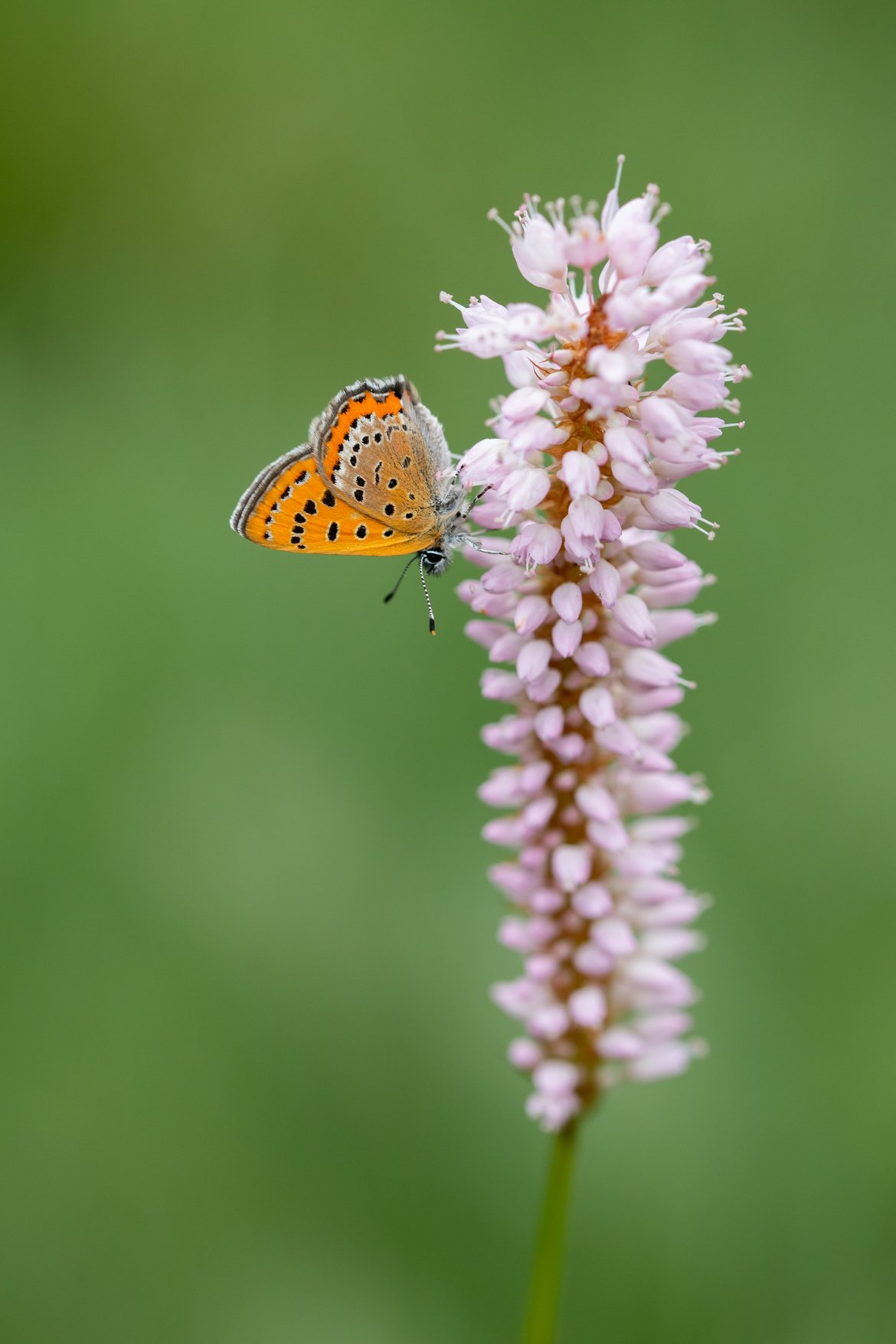
Bistort copper (Lycaena helle)
Description and ecology
Conservation status: endangered (Europe and Luxembourg), vulnerable (Wallonia).
The Bistort copper (Lycaena helle) is a small butterfly (wingspan 24-28 mm) frequenting semi-open wet meadows. The colour distribution of the forewings and hindwings is opposite. While the forewings are orange, edged in dark brown and dotted with black, the hindwings are brown with orange borders. There is a characteristic purple sheen on the upper surface of the wings, which is more pronounced in males than females.
Moist grasslands or fallow land rich in flowers, semi-open and close to waterholes are ideal habitats for this butterfly. Within an area of a few hectares, its habitat must meet the following conditions: presence of Bistorta (Persicaria bistorta), the caterpillar's food plant, in good density and sunny location; sufficient nectar sources for the adults; and sunny, wind-sheltered edges. This species flies in one generation, mainly in May-June, with a peak in early June, and overwinters as a pupa.
With its relatively low dispersal capacity, this butterfly is all the more threatened by the lack of interconnection corridors between its populations, reducing its chances of genetic diversification and recolonisation of territories more favourable to its survival. The loss and degradation of its habitats (draining of wetlands, intensification of agriculture, total abandonment of wetlands) represent real threats to this species.
As part of the project
The project involves restoring 90 hectares of bistort meadows, a habitat that is vital to the survival of the species. In the Grand Duchy of Luxembourg, 60 hectares will be restored. In Wallonia, 30 hectares will be restored. The ultimate aim being to maximise the reconnection of these sites with each other so that populations of the species can be maintained in a more resilient way.
Habitat description
Bistort's copperwort meadows are not included among the Natura 2000 habitat classification. However, they are the subject of restoration measures to encourage the presence of this butterfly, which forages and lays its eggs on Bistort Knotweed (Persicaria bistorta). These grasslands develop on alluvial soils that are wet to very wet and moderately rich in nutrients (mesotrophic), at altitudes of over 400 m. Found in valley bottoms, depressions and lower slopes, these meadows require special management adapted to the life cycle of both their flowers and their butterfly hosts. Mowing or grazing on a three-year rotation is particularly necessary to avoid destroying butterflies at the egg or caterpillar stage. It is therefore necessary to practise "temporary abandonment" by intervening only one year out of three.
Some characteristic species
The meadows sheltering the Bistort Copper are rich in floristic species. These include: Wood Angelica (Angelica sylvestris), Marsh Forget-me-not (Myosotis scorpioides), Cuckoo Flower Lychnis (Silene flos-cuculi), Marsh willowherb (Epilobium palustre), Tufted sedge (Deschampsia cespitosa), Acutiflorous rush (Juncus acutiflorus) and Marsh Cirse (Cirsium palustre)...
These wet bistort meadows are also frequented by many other butterfly species that have become rare today. The actions implemented for the Bistort Copper will therefore benefit these species, as well as the Bistort Pearly (Boloria eunomia).
© Corentin Thomas



